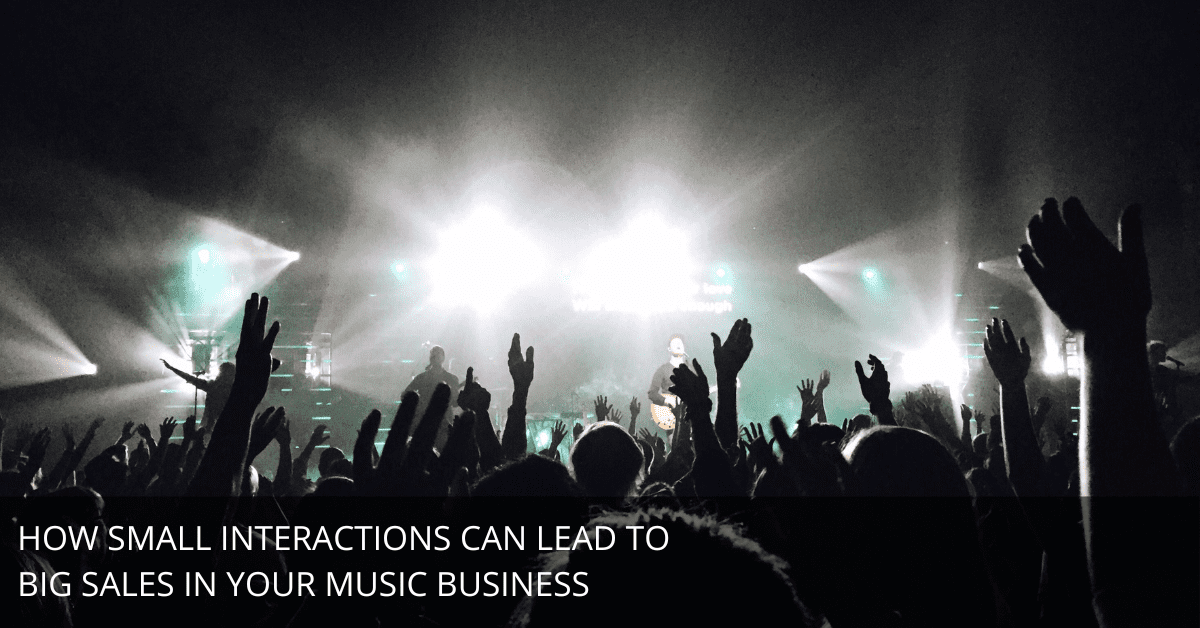
If you’re a musician looking to expand your reach and monetize your talent, you’ve probably heard the advice to “build a relationship” with your audience before you sell to them.
The Encore Client System takes this concept further by breaking it into two stages: microtransactions and macrotransactions. Microtransactions are those smaller, trust-building steps, while macrotransactions are the larger sales that follow once your audience is ready to invest more in you.
Let’s explore how this two-step approach can help you attract more students, clients, or fans who want what you offer and are willing to pay top dollar for it.
Microtransactions: Building Trust in Small Steps
Microtransactions are the lifeblood of building trust with your audience. These are the low-barrier, often free interactions you have that make people curious about what you do. Think of things like sharing short music tutorials, posting clips of your performances on social media, or engaging in online groups where your target audience hangs out.
Microtransactions don’t feel “salesy” because they’re not. They’re value-based interactions designed to get your audience comfortable with who you are and what you offer.
Imagine posting a 30-second video on Instagram sharing a quick tip on hand positioning for playing a piano chord. It’s quick, actionable, and useful and creates a connection. Each interaction like this builds rapport and opens the door to a deeper relationship. The more they see you delivering value, the more likely they’ll trust you when it’s time to make a more substantial investment.
Macrotransactions: Where Trust Turns into Sales
Once you’ve stacked up enough microtransactions, it’s time to move into macrotransaction territory.
Macrotransactions are the higher-value offerings—private lessons, exclusive workshops, or even personalized music services—that require a more substantial commitment from your audience. At this point, you’ve earned enough trust that your audience knows you’re the real deal and is more open to paying for your expertise.
For instance, after sharing weeks or months of free content, you might offer an exclusive four-week course on advanced music theory for $497. Now, this offer feels natural, not forced. You’ve spent time proving your value, and your followers are primed to say yes to this higher-ticket sale.
Macrotransactions work because you’re not just asking for money—you’re offering an experience or skill upgrade that feels worth every penny.
How to Use Microtransactions to Prepare for Macrotransactions
Microtransactions aren’t just about giving value. They’re strategic steps that lead to those high-ticket offers. Here’s how you can structure your microtransactions to make sure they build up to a successful macrotransaction:
- Start with Content that Solves Problems: Identify a common struggle for your audience and offer a small solution. For example, if you’re a violinist, share a video on “Three Tips for Perfect Bowing.” Make it valuable enough that viewers feel they’ve gained something real. This plants the seed for your paid offerings by positioning you as an expert.
- Engage Consistently: Drop by social media, respond to comments or ask questions that invite interaction. Let your audience know you’re not a “once-and-done” type; you’re there for the long haul. Show up in their feed regularly, so when you’re ready to make an offer, they’re familiar with you.
- Create a Clear Journey: Make sure each microtransaction points toward your eventual macrotransaction. If you plan to sell a private coaching package, use your microtransactions to introduce the kind of skills or benefits your coaching provides. This makes the progression to a paid offer feel natural.
Examples of Microtransactions You Can Start Today
Here are a few microtransaction ideas you can start right now to warm up your audience without feeling pushy:
- Short Tutorials: A 60-second Instagram reel showing a quick technique or warm-up exercise.
- Behind-the-Scenes Clips: Share how you prepare for a performance or what your practice setup looks like.
- Story Q&A Sessions: Use Instagram or Facebook Stories to answer follower questions and showcase your expertise.
- Polls and Interactive Posts: Poll your audience about what they’d like to learn or improve on. It’s a low-effort way to engage and shows you care about what they want.
Whenever you deliver one of these small but impactful interactions, you position yourself as a resource and expert.
Turning Microtransactions into Macrotransactions
After enough small interactions, you’ll start noticing the audience is primed for something bigger. Here’s how to move from microtransactions to that first macrotransaction:
- Identify Who’s Engaged: Pay attention to followers who are consistently interacting with your content. These people are likely your warmest leads.
- Offer a Mid-Range Product First: Before going straight to a high-ticket offer, test the waters with something moderately priced, like a $47 mini-course or $97 one-time workshop. This allows you to gauge interest and build more trust without requiring a huge commitment.
- Gather Testimonials: Use feedback from this initial offer to show your larger audience that your services deliver results. Social proof is powerful, and hearing about others’ success makes future customers more likely to invest.
The Macrotransaction Moment: Selling High-Ticket Offers
Now that you’ve nurtured your audience, selling a higher-ticket service feels less intimidating. When you’re ready, put your high-value offer out there confidently. Here’s how to make it work:
- Position Your Offer as the Next Step: Explain why this new offer is the logical next step for those following your content. For example, say, “If you’ve enjoyed my free tutorials, my 1:1 coaching will take your skills even further.”
- Highlight the Benefits: Focus on the specific transformation they’ll get from investing in this offer. Don’t just say, “Improve your guitar skills”—say, “Master advanced techniques in 6 weeks and perform confidently in front of any audience.”
- Add Urgency: Encourage immediate action by adding a deadline or limited availability, like “Only 5 spots available this month.”
Why Micro-Macro Works for Musicians
As a musician, selling high-ticket offers can be challenging if you jump straight into it. By taking the time to build trust with microtransactions, you’re not just making sales—you’re creating fans who genuinely value what you bring to the table. This isn’t just about selling; it’s about building a community around your music and skills, where your audience feels connected to your journey.
Next Steps: Try Out Your First Microtransaction
To get started with this approach, think of one microtransaction you can create today. Maybe it’s a quick tip on setting up a home studio or a behind-the-scenes look at your songwriting process. Share it on social media, engage with anyone who comments, and start building those small but meaningful connections.
The Encore Client System is about taking your audience from curious fans to invested clients. Start small and stay consistent; those big-ticket offers will feel like the natural next step. When your audience is ready, they’ll be excited to invest in you because they’ve seen the value you bring to the table every step of the way.

